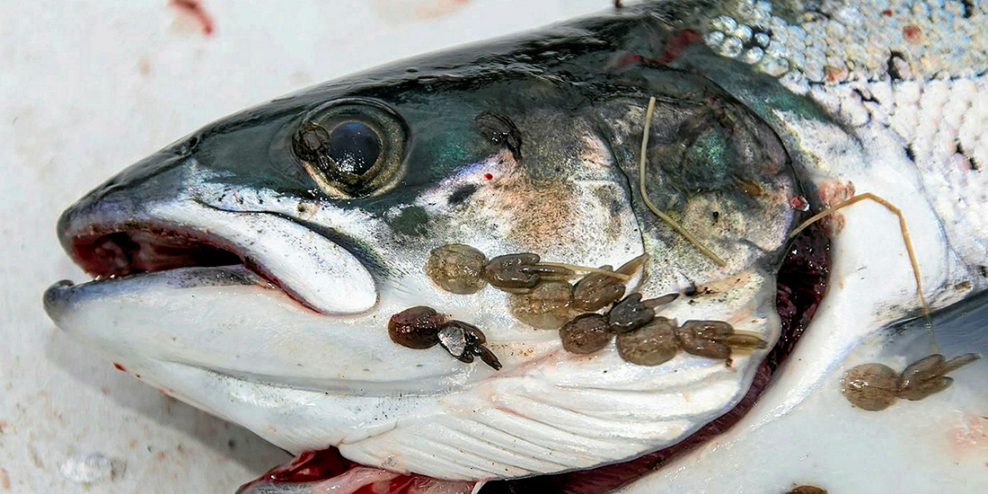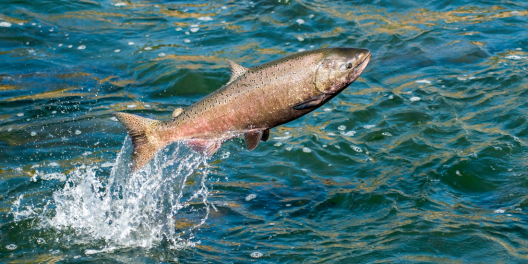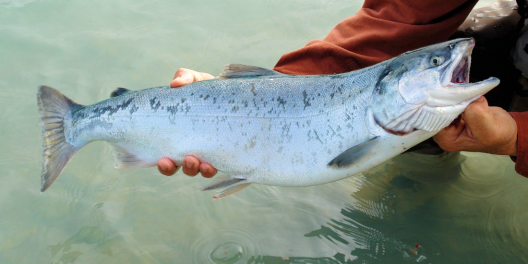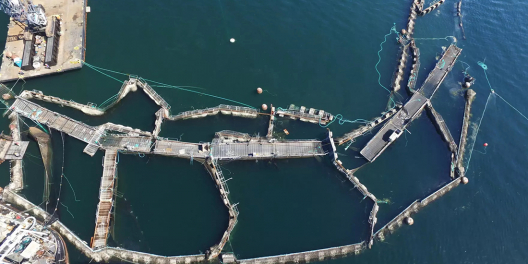New research shows that the sea lice that infect wild and farmed salmon in the Broughton Archipelago are getting resistant to a popular treatment. What’s worse is that the fish farming industry probably knew and just didn’t tell anyone.
For years, the factory fish farm industry has used the chemical emamectin benzoate to kill sea lice. The brand name for the chemical is SLICE. In Atlantic Canada, factory fish farms had to stop using SLICE because it stopped working. Instead of dying in the treatment, the sea lice started to survive.
But for a long time, folks thought SLICE still worked against sea lice around VanIsle. In fact, experts thought our part of the Pacific was the last place where SLICE was still effective.
But the news got out about a problem farm in 2013. After that, it looked like sea lice could survive SLICE. But it was written off as a passing phase. And then another one appeared in 2018.
It’s only now that we have data to show that sea lice all over the Broughton Archipelago can survive SLICE. And the problem may have started as far back as 2012.
We only know because Mowi and Cermaq had to start sharing their data with the Mamalilikulla, ‘Na̱mg̱is, and Kwikwasut’inuxw Haxwa’mis First Nations in 2019, including data going back to 2010. Industry wasn’t going to tell the public, and neither were the government bodies that oversee the fish farms.
When researchers from these Nations and a couple of universities took a look at the data, the picture wasn’t pretty.
It takes a lot more of the chemical to kill the lice now than it did ten years ago. Resistance to the treatment started really going up around 2017. Things have been getting worse—and getting worse faster—ever since.
That’s because when you use one treatment to kill the sea lice, and some sea lice survive, the ones that live make babies that aren’t as affected by the treatment.
That might explain why Grieg and Cermaq’s de-licing boats have made so many trips and used different treatments. You remember the boats the companies used to frantically try to get the number of lice per fish to less than three before the government deadline.
If the SLICE doesn’t work anymore, but the factory fish farm companies still need to kill the lice, they have to try something else. They’ve spent millions on different technologies, but the lice keep coming.
Industry may just throw more money at the problem, too. After all, between January and March, Mowi made almost double the profit it made in the months before Christmas. So it’s not like they’re short on cash.
Open-net factory fish farms may soon be a thing of the past in the Broughton Archipelago. The federal Liberals have promised to phase them out by 2025. Licences for almost 100 fish farms around VanIsle might not get renewed as early as June.
It would be interesting to know if the SLICE problem helped the federal government decide to phase out the farms.
But if they’re as tight-lipped about their decision as they’ve been with this SLICE data, then we’ll probably never know.









